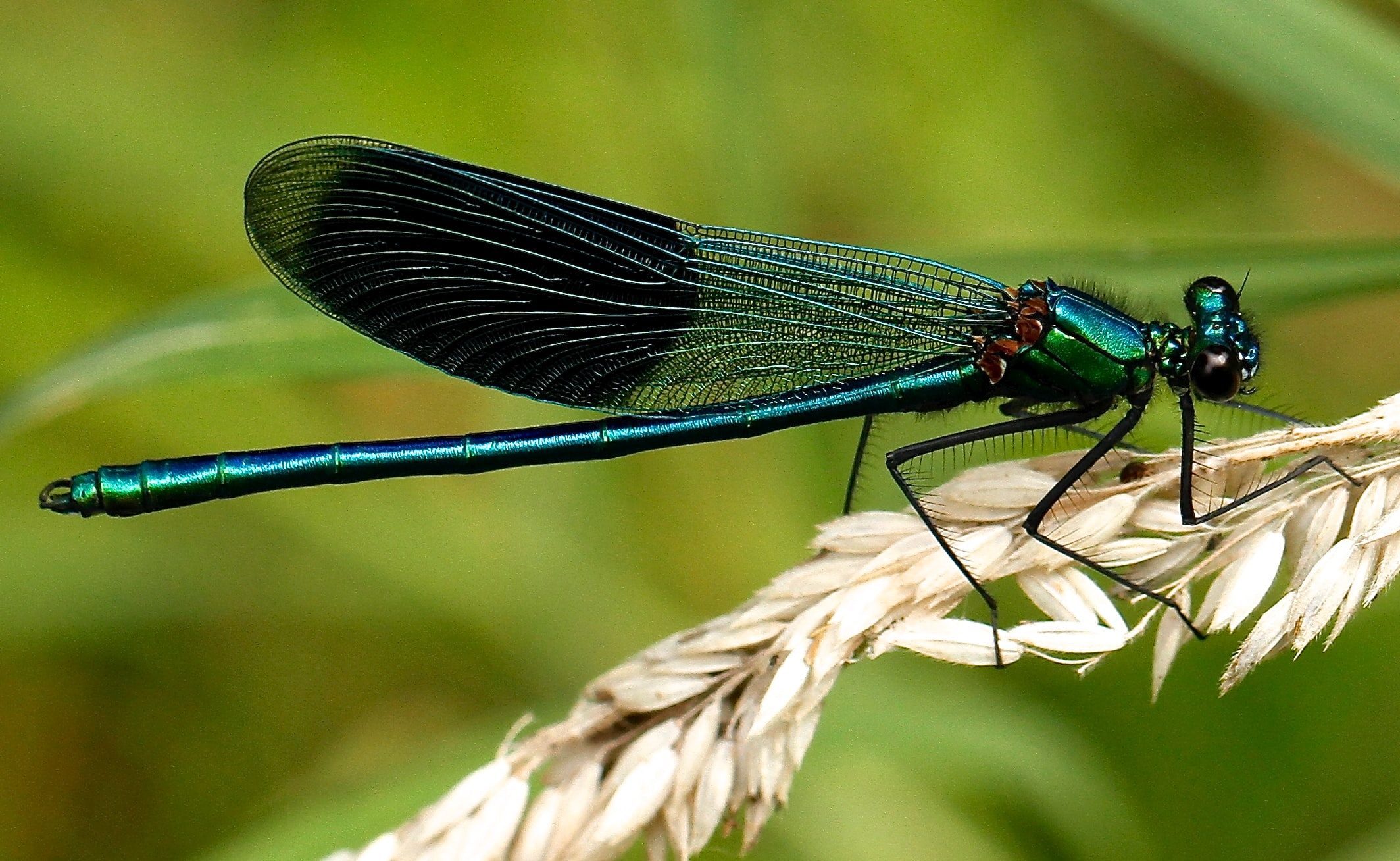The bodies of damselflies have brilliant metallic colors derived from structural arrangement of pigment granules.
“The brilliant metallic colours of many Odonata, especially damselflies, derive from the structural arrangement of granules. Pigment in the wings of such species as Agrion virgo is similarly distorted by light to produce resplendent shifting effects of green-blue-purple. In some male dragonflies, as Libellulids, the pale Cambridge blue of the abdomen has a distinctive structural cause since it initially derives from a fine powdery exudation of the epidermal cells, producing an effect like the bloom on a plum: the granules are so small and regularly arranged that they reflect only the pale blue part of the light spectrum and, indeed, often appear almost white.” (Wootton 1984:140)
“The appearance, fine structure and pigment composition of the epidermal chromatophores of mature Austrolestes annulosus (Lestidae) are described and compared with the developing chromatophores of teneral Austrolestes and the mature chromatophores of Diphlebia lestoides (Amphipterygidae) and Ischnura heterosticta
(Caenagrionidae). Mature chromatophores contain masses of near
spherical light-scattering bodies and larger irregularly shaped pigment
vesicles. These effect colour change by migrating in opposite
directions, through a system of interconnecting granular endoplasmic
reticulum tubules. The pigment, a mixture of xanthommatin and
dihydroxanthommatin, has a liquid or gelatinous consistency. Developing
chromatophores of teneral insects lack light-scattering bodies and
well-defined migratory pigment vesicles, but contain irregular masses of
pigment of similar chemical composition.” (Vernon et al. 1974:613)





